


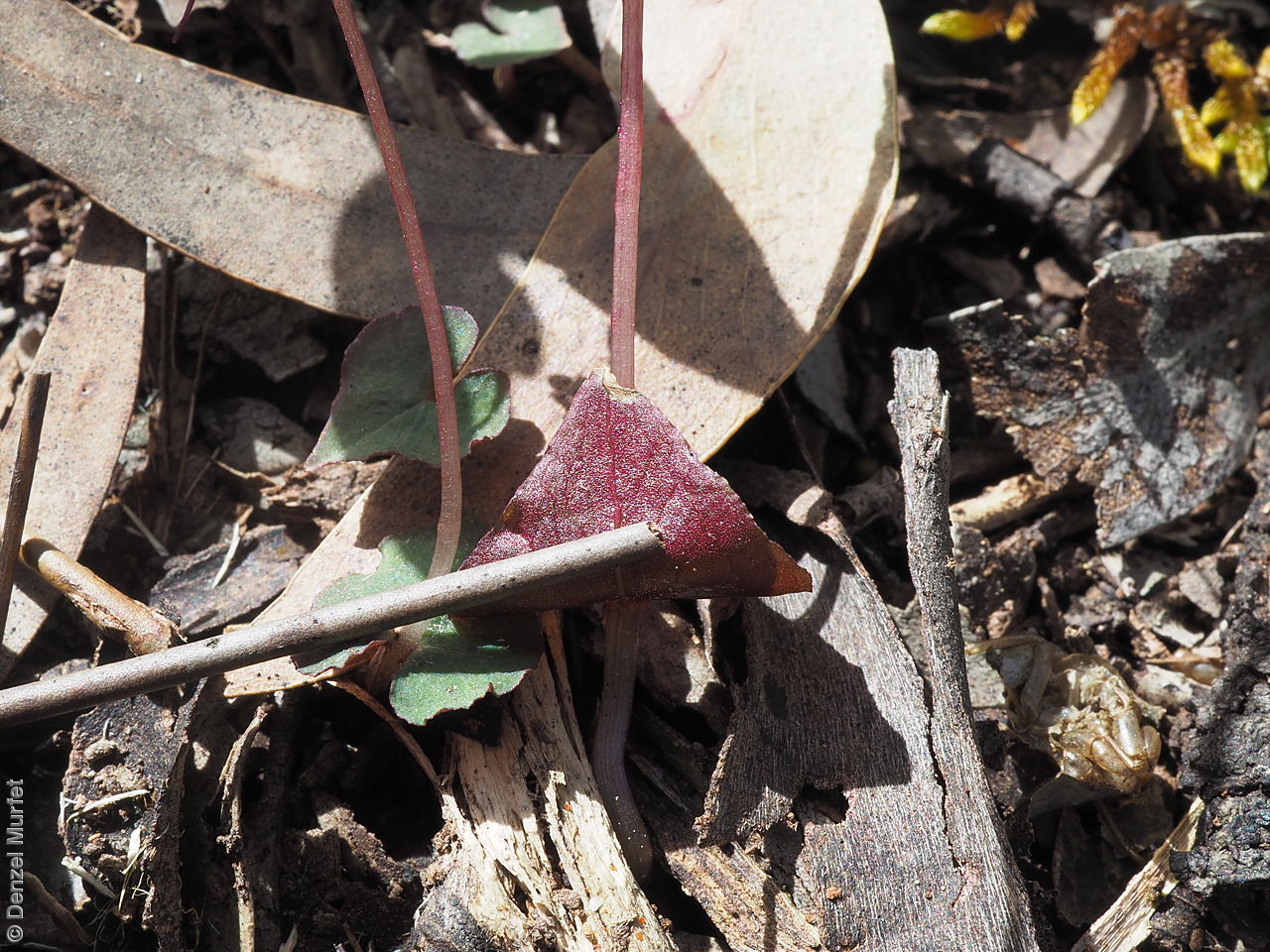
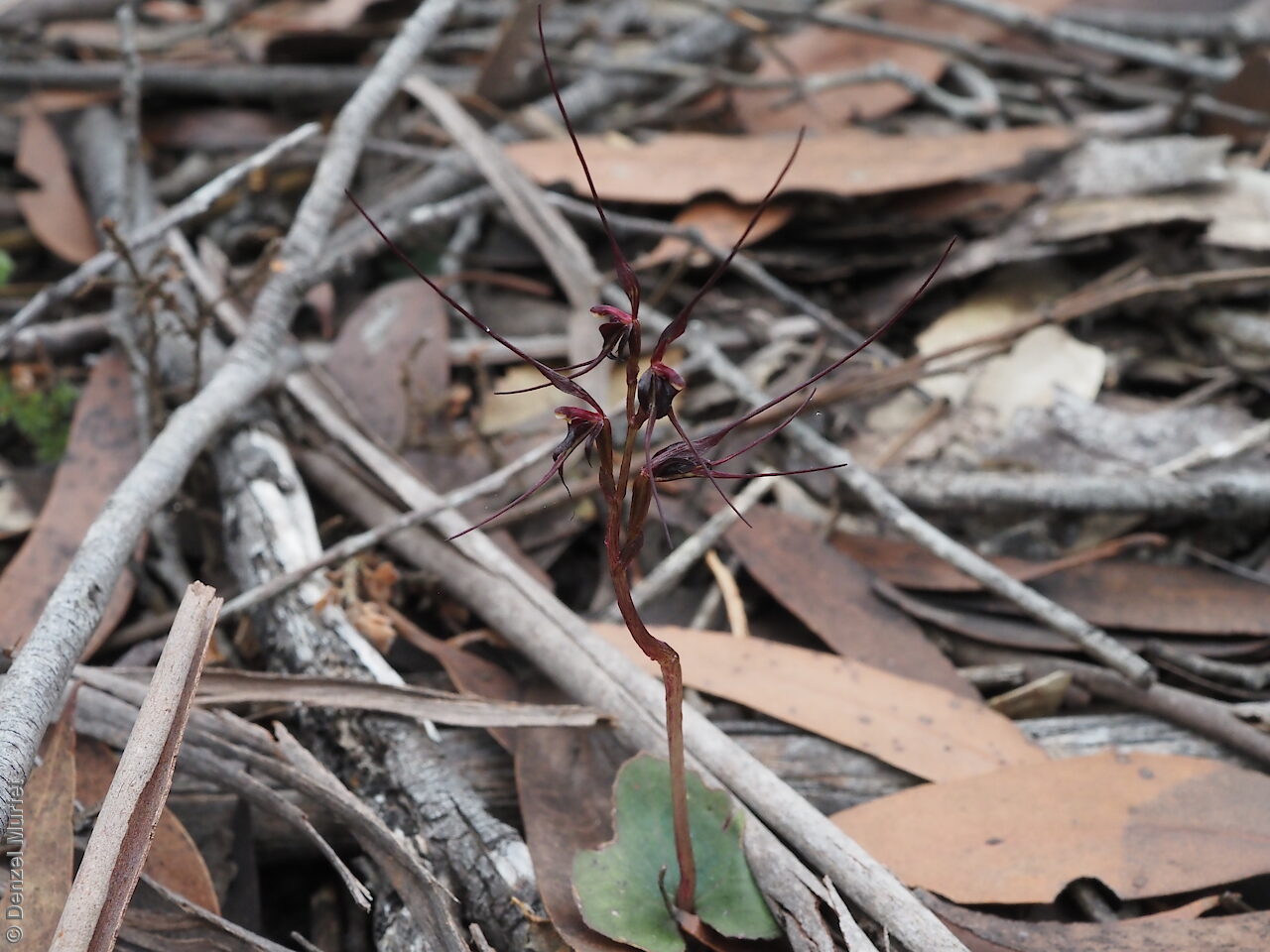

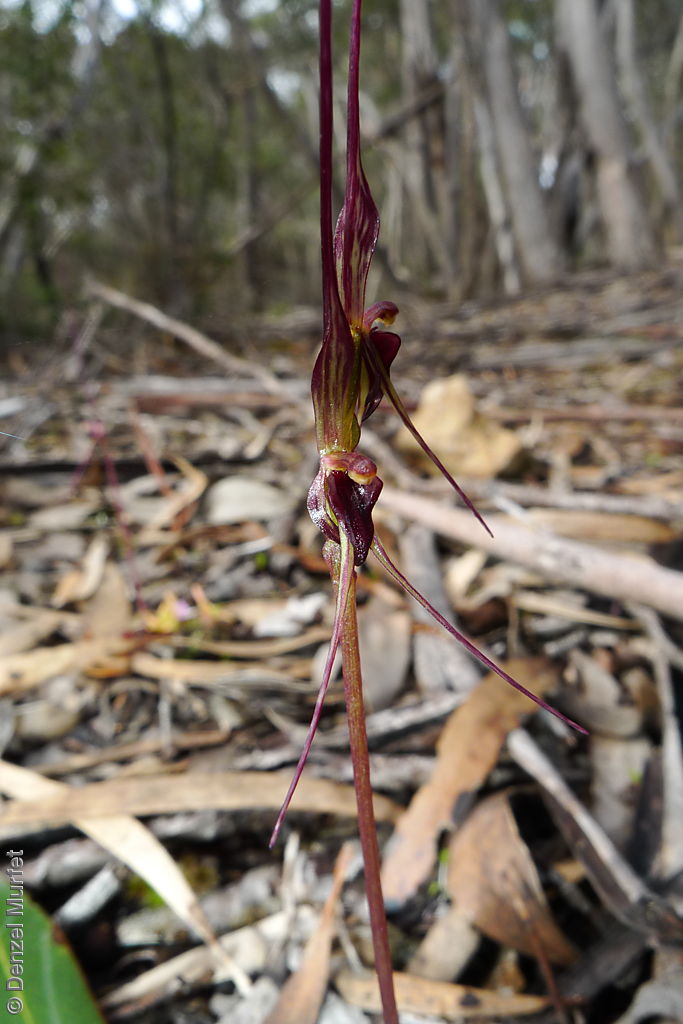
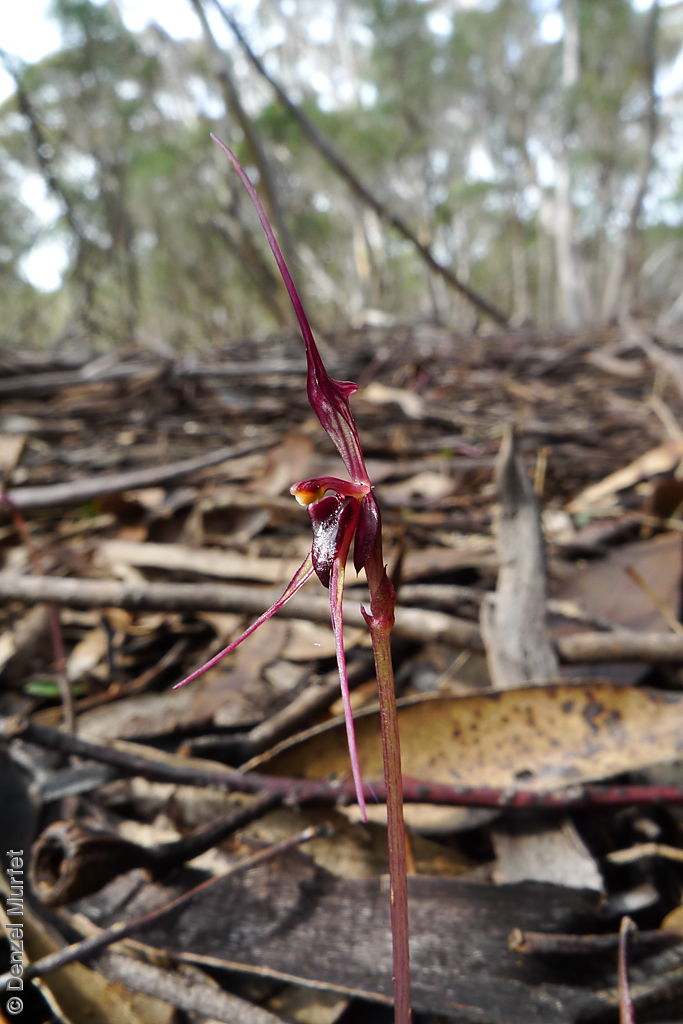
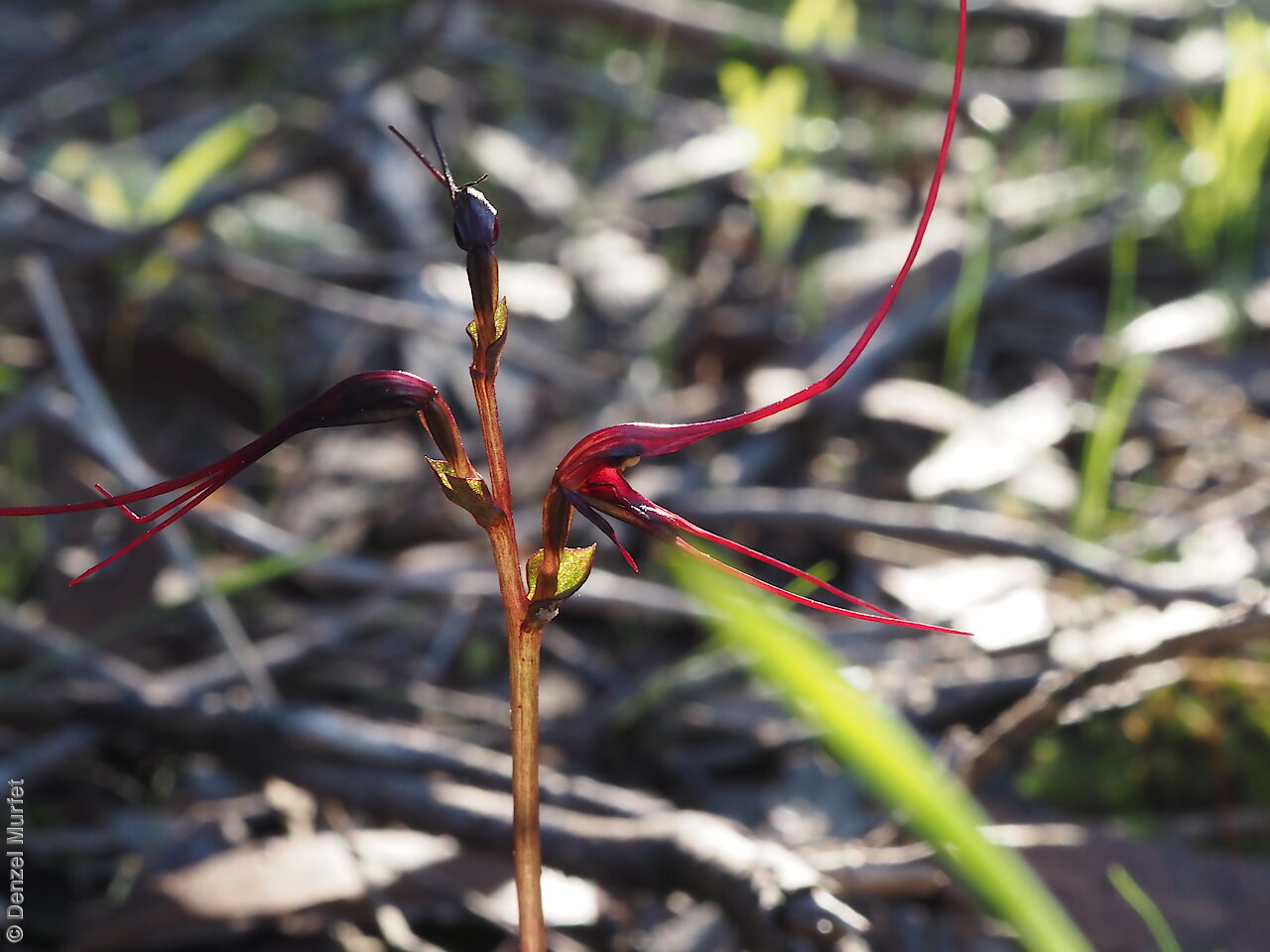

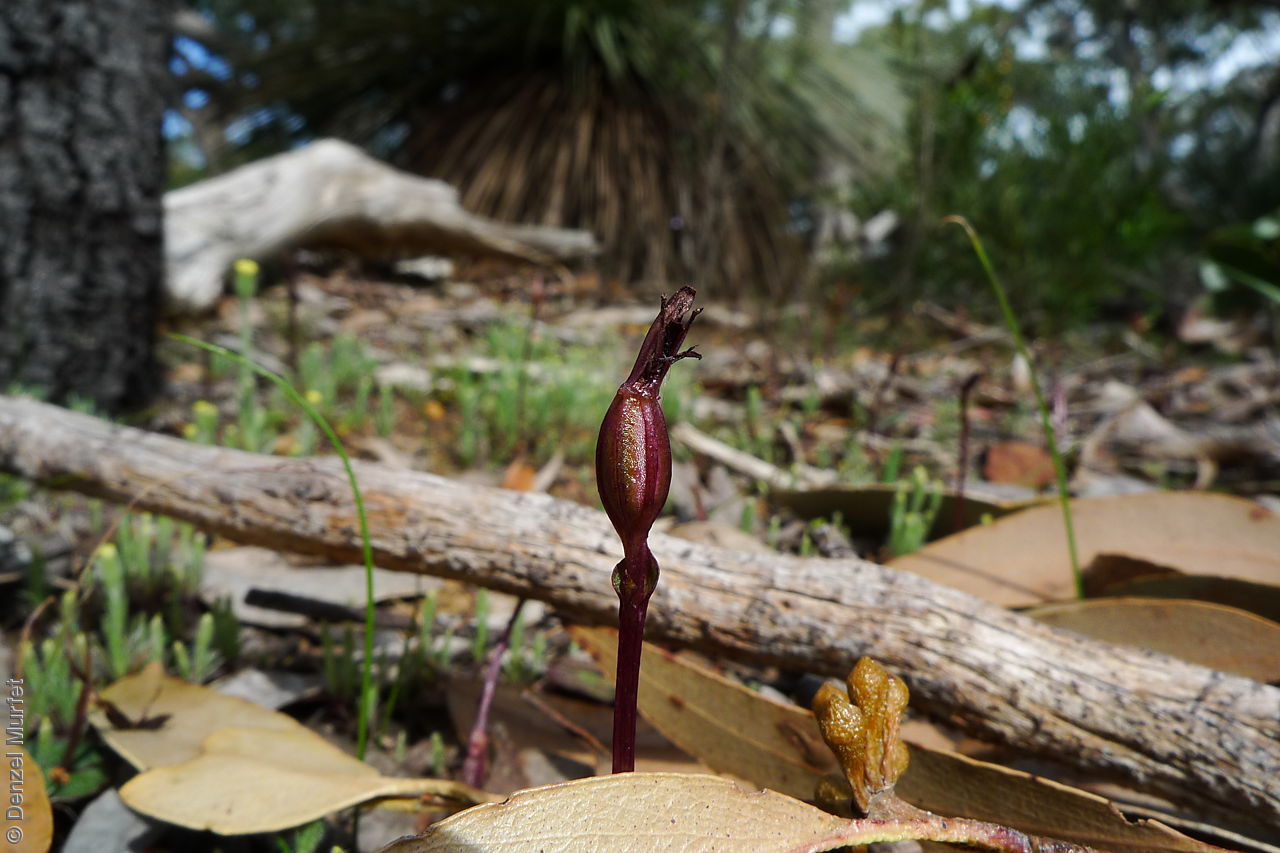

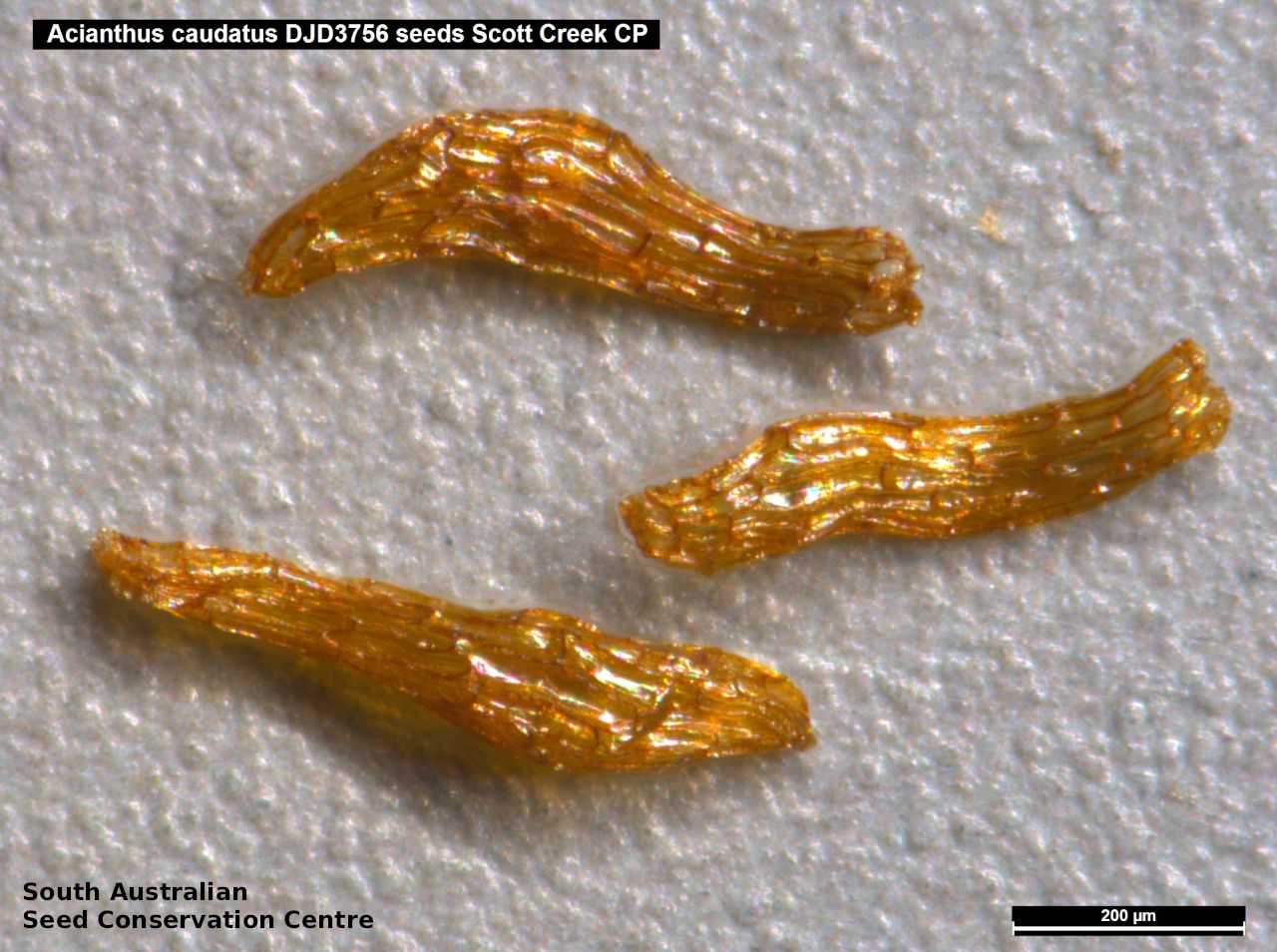

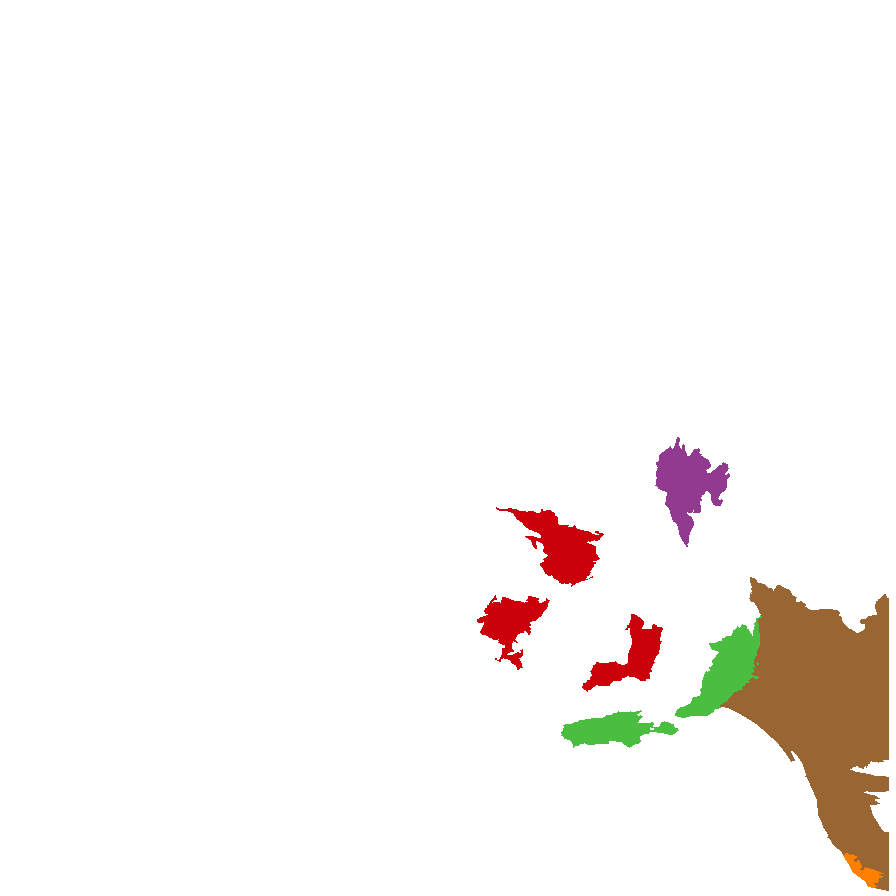
Botanical art
Prior names
Nemacianthus caudatus
Acianthus caudatus var. pallidus
Acianthus caudatus var. caudatus
Common names
Mayfly orchid
Dead Horse
Etymology
Acianthus from the Greek 'akis' meaning a point or needle and 'anthos' meaning flower, referring to the pointed sepals. Caudatus from the Latin 'cauda' meaning tail, referring to the long 'tail-like' dorsal sepals.
Distribution and status
Found mainly on Kangaroo Island and the southern Mount Lofty Ranges in South Australia, with scattered and isolated records from bottom of Eyre and Yorke Peninsulas, southern Flinders Ranges and the South-east, growing in clay or sandy soils, in shaded places in open woodland. Also found in Queensland, New South Wales, Victoria and Tasmania. Native. Uncommon in South Australia. Rare in Queensland. Common in the other States.
Herbarium regions: Eyre Peninsula, Northern Lofty, Murray, Yorke Peninsula, Southern Lofty, Kangaroo Island, South Eastern, Green Adelaide
NRM regions: Adelaide and Mount Lofty Ranges, Kangaroo Island
AVH map: SA distribution map (external link)
Plant description
Small annual orchid to 14 cm tall. Leaf heart-shaped to 33 mm long and 30 mm wide, green above, reddish-purple beneath, margins wavy and clasping the reddish stem just above the ground. Flowers 1-6 on a single stem, dark purplish, often with musty odour. Dorsal sepal to 45 mm long, tapering to a fine point, lateral sepal shorter to 25 mm long, tapering to fine points curving upwards at tips. Flowering between September and October. Fruits are brown papery ellipsoid capsule, reddish when immature. Seeds are very small, golden-brown, ellipsoid with a long cylindrical translucent brown mesh-like covering.
Seed collection and propagation
Collect seeds between July and September. Collect fat capsules as they start to dry and turn brown. Pods will split and release the seeds quickly and will require monitoring. To increase the chances of collecting mature pods, it is recommended that a small breathable bag (ie.Organza bags) be used to enclose the developing capsules. Place the capsules in a container that will hold fine seeds, and leave to dry for a few weeks or until the capsules split.Then carefully hold the capsule and tap it gently to release the seeds. Store the seeds with a desiccant such as dried silica beads or dry rice, in an air tight container in a cool and dry place or in liquid nitrogen.
| Location | No. of seeds (weight grams) | Number of plants | Date collected | Collection number Collection location | Date stored | % Viability | Storage temperature |
|---|---|---|---|---|---|---|---|
| BGA | 16,000 (0.0056 g) | 10 | 30-Aug-2018 | DJD3756 Southern Lofty | 24-Apr-2019 | N/C | -18°C |
Number of plants: This is the number of plants from which the seeds were collected.
Collection location: The Herbarium of South Australia's region name.
% Viability: Percentage of filled healthy seeds determined by a cut test or x-ray.